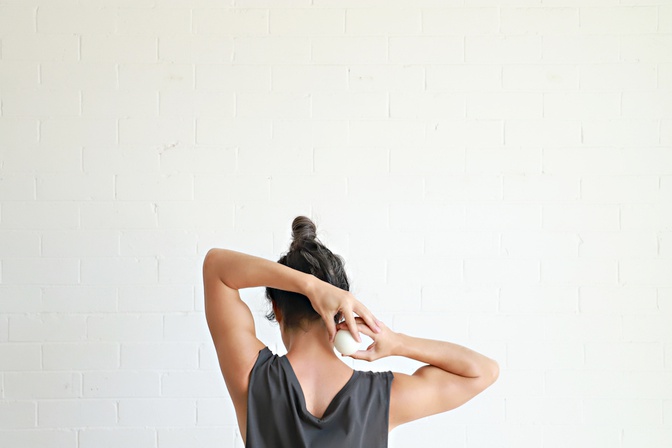Body aches have become the norm for office workers. If you’re moving from the couch back to your desk chair, these tips will help you feel great and stay productive.

Working in the office has its perks – spending time with your colleagues, access to your favourite lunch spots and getting your daily steps in. But moving between the couch and desk chair means you might be feeling a little less comfortable, and neck or back pain can come as a result. A Deloitte study found that more than 3 million Australians are living with chronic pain, costing Australia $73.2 billion dollars each year – including $48.3 billion in lost productivity.
We spoke to experienced myotherapist and Bodyguide app founder Matthew Green to get some tips on fighting soreness at your desk and take a step towards reducing chronic pain in Australia. Green founded Bodyguide in 2020 in order to create tailored programs for people aiming to eliminate muscle aches and pains. While massage therapy and specialised exercises are great for treating long-term problems, he says people can take simple steps at their desks or at home to reduce the likelihood of aches occurring.
“Looking down at a laptop is enough to give anyone a sore neck. Use some books, a box or a stand to lift your screen up. Make sure you get a cheap keyboard and mouse – or something nicer if your office will supply it. This is a great way to save a bunch of money on a massage.”
“Fancy chairs and desk setups won't necessarily be more comfortable than a standard office chair, you've just got to experiment with what’s right for you. While most people think of slouching as an upper body issue, it's often your hips rolling backwards in the chair that makes you slouch forward. Try popping the towel from your gym bag behind your hips, you'll find sitting upright is much easier.”
“At the end of the working day, spend some time lying on a tennis ball to keep the muscles of your neck and shoulders healthy. Find a tender spot, stay still, and breathe evenly for thirty seconds. If you can, self-massage lying down, so that gravity does all the work while you relax.”
“Using cardboard boxes, books or anything around the office, you should be able to set up a standing desk at work. Switching between sitting and standing during the day can help improve concentration and decrease fatigue. It's also been shown to improve back, neck and shoulder pain. Some gentle twisting and turning is great to include while you’re standing, as well as anything that opens your chest and shoulders."
Photography: Courtesy of Bodyguide



